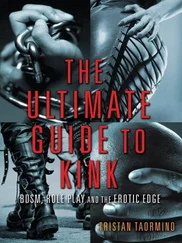Rundbrief —(“Round Letter”) Homosexual literary journal. [1932]
Die Sonne —(“The Sun”) Queer monthly from Hamburg. [1920-1921]
Der Strom —(“The Stream”) Politically-radical gay monthly. [1920]
Die Tante —(“The Auntie”) An offprint of Der Eigene . For Aunties . Filled with anti-Hirschfeld invective. [1924--1925]
Uranos —Literary gay journal edited by René Stelter. Later merged with Der Freundschaft . [1922-1927]
Wochenblatt für Aufklärung und gesitige Hebung der idealen Freundschaft —(“Weekly Paper for the Enlightenment and Contemporary Improvement of Ideal Friendship”), gay newspaper with Third-Sex orientation. Edited by Schultz. [1919-1922]
Paragraph 175 provoked many political and scientific responses among German intellectuals and ultimately galvanized homosexuals in Central Europe to organize for the protection of their legal rights and communal lifestyle. (This was two generations before the Stonewall Revolution in New York.) “One-Seven-Five” gave urgency, new definition, and a common goal to Germany’s estimated two million gay men, who otherwise lived in civic isolation from one another.

From the start, however, bickering over the “psychogenesis” of their orientation, public persona, strategic style, political alignment, use of language, attitude toward women, and sexual tastes divided German queer leadership. Essentially, three schools of thought emerged: the Militant Homosexualists, the Third Sexers, and the Libertarians. Each grouping had its own organizations (which seemed to change names every half-decade), periodicals, notion of fair play, artistic sense, and theoreticians.
Led by Adolf Brand, the indefatigable editor of Der Eigene , the Homosexualists envisioned a new Nietzschean hierarchy, along an imagined, antiquitous Greek classification. Wise and muscular Aryan pederasts with their admiring boys headed the Homosexualists’ proposed social order, followed by grades of straight men, based on physiognomy, racial purity, and intelligence; then women. (These lessers were necessary for replenishing the race.) At the very bottom were effeminate men—the sexually enfeebled, the sissies and cross-dressers, all those who gave sodomy its reviled façade of weakness, narcissism, and emotional hysteria.
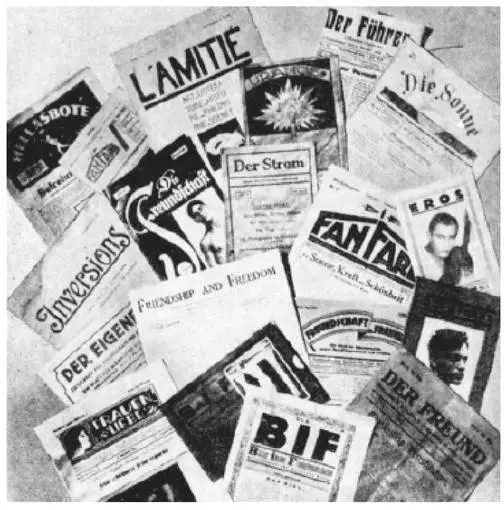
Popular account of gay prostitution in Berlin, Men for Sale , 1932
The Third Sexers attempted to explain homosexuality as a normal genetic phenomenon. Men with “female souls”—and women with male sexual dispositions—were normal “miscues” in the process of natural selection. Rather than pathological beings, homosexuals formed a “Third Sex,” neither “full man nor full woman.” According to Magnus Hirschfeld, Berlin’s renowned sexologist and human rights leader, gay men and women inhabited an “intermediary” zone on the wide spectrum of human sexuality. In the radical ideology of the Third Sexers, all sexual behavior (which involved consenting adults) was worthy of individual respect and state protection.
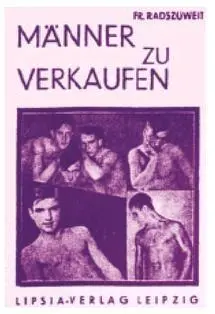
Der Eigene cover
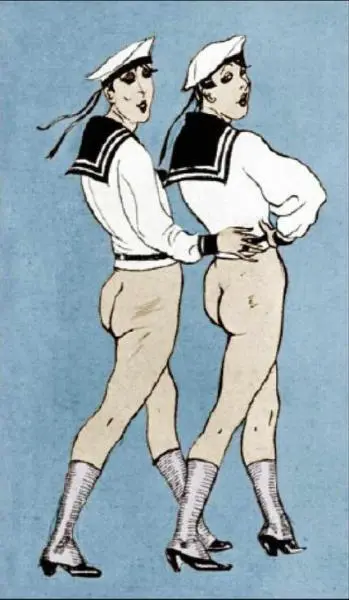
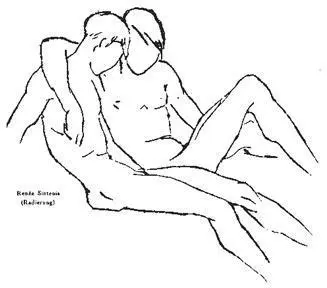
The Libertarians, the vast majority of Germany’s gay men and women, followed neither the Nationalist nor International-Socialist rhetoric of Brand and Hirschfeld. Represented by Friedrich Radszuweit, an organizer from Hamburg and Al Goldstein-like publisher, they pursued their same-sex endeavors through social ties and apolitical means. Other than working for the abolition of Paragraph 175 and related censorship laws, the Libertarians eschewed the superheated cauldron of Weimar politics. Relatively few dabbled in reactionary or progressive causes and then only as German voters who happened to love members of their own sex.
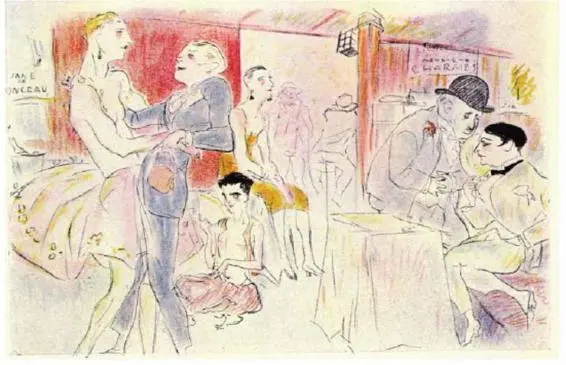
Marcel Vertès, Parisian Night at the Lokal
“Origins” of Homosexuality
While Brand, Hirschfeld, and Radszuweit conducted a battle royale for the allegiance and support of Germany’s gay community and its many sympathizers, straight psychologists in Berlin promulgated their own theories which they thought explained the baffling origins of adult male-to-male desire. Strict Freudians acknowledged the innate bisexual nature of the human organism; homosexual feeling was a normal and short phase in a healthy boy’s development. For those who never outgrew the emotional stage, the Freudians subscribed to a flipped formulation of the master’s prized Oedipus complex: Growing up in the household of a domineering mother, the budding homosexual over- identifies with his emasculated or absent father. After puberty, the boy projects his own image onto his male consort as he unconsciously performs the double role of a sexually caring mother.
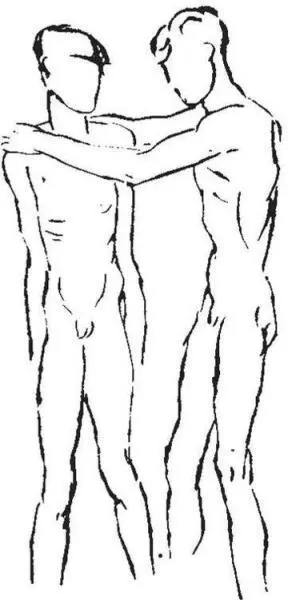
Renée Sintenis, Boys , 1923
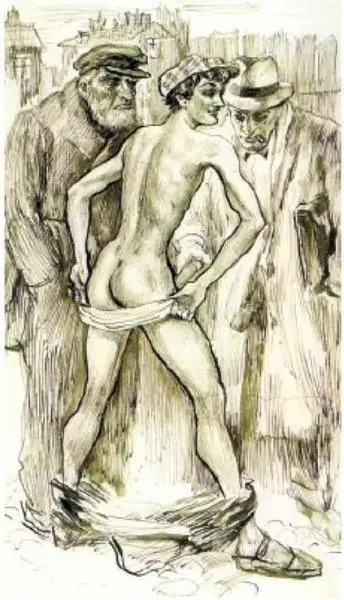
Hildebrand, The Inspection
Disciples of Wilhelm Stekel took a more primitive psychoanalytic approach. Homosexuality was quite simply the penultimate rejection of women, a reaction formation against oedipal cravings and traumatic memories of a parent’s coital activity. Adlerians, of course, saw same-sex love as an advanced tactic to attain power and status. In their analysis, the physically weak boy discovers that his self-ideal of superiority cannot be based on normal feelings of masculinity and aggression. He learns to assert himself sexually by exciting and controlling other homosexuals.
Wilhelm Reich, who arrived in Berlin in 1930, advanced an even more hostile psychogenetic theory. The Passive-Feminine Homosexual (“Subject Homosexual”) reacts to the hysteria of his mother through passivity and an identification with female sexuality. Contaminated by an emotionally-inert emotional core, he deals badly in daily interaction, which typically manifests itself in a pronounced weakness of body movement (especially in the shoulders and arms). The Aristocratic Homosexual (“Object Homosexual”) develops a different character armoring—corporal rigidity and hyper-aggressive behavior. Each struggles with the hidden fear that his father will one day savagely punish him for his inadequate heterosexual longings.
Even Carl Jung, working in faraway Switzerland, saw homosexuality in a negative light as well. He believed that the perverse attitude began with an over-protective mother (“the Female Shadow”) who sexually tied her image to a confused and desperately insecure infant son. The boy would be condemned to discover that true fidelity to his mother meant sexual avoidance of all other females later in life and sexual congress only with men.
Читать дальше











